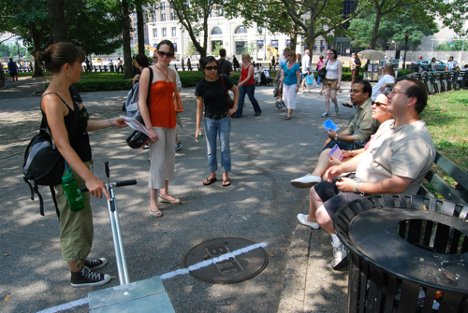By Jared Stilwell
Many activists are deeply engaged in creating movements and spaces that are more diverse and inclusive. Most still come up short as it is incredibly difficult to draw in every voice and make sure each is heard. Nevertheless, the barriers to inclusivity should not mean we put any less effort into creating a truly accessible and inclusive space.
The articles and pieces assembled for this unit aim to address some of the ways in which the environmental movement continues to struggle with issues of accessibility and inclusivity. They also highlight some of the ways the movement has endeavored to address these issues. They each examine a different issue when it comes to the idea of accessibility or exclusion. Gibson-Wood and Wakefield discuss the idea of accessibility as it plays out in a case study on the Hispanic Community in Toronto. They tackle the economic accessibility of the environmental movement, as well as the idea of what it means to be ‘green’. An accessible or inclusive definition of how environmentalists—including, more importantly, people who do not self-identify as an activist or environmentalist—should act cannot be monolithic. The idea that people have their own strengths to bring to environmentalism is universal, so too should be the idea that people cannot and should not participate in saving and protecting the environment in an identical manner.

Other sources delve into the questions and purpose of the theory of environmental criticism within the movement to preserve the world as it can certainly box people out or ‘other’ them due to the inaccessibility of an education on such matters. Activism and environmentalism should not require hours of theory and graduate courses, although these of course have their place. It is vital to include those who have not had the opportunity to engage with the theory and provide spaces and movements where activists or environmentalists can work regardless of their backgrounds. Werner strives to resolve the purpose of ecocriticism and eco-speak, as well as discuss the importance of pragmaticism and acting alongside theory. Theorists and movement leaders can certainly learn a lot from those that cannot join organizations or attend rallies due to the economics of their lives but embody clean and environmental living, those who need not be lectured on the footprint of driving to work every day as public transport has always been a necessity. Solnit also speaks on the not uncommon matter of looking down and excluding those who place themselves against environmental movements and discusses the importance of not counting people out due to their current circumstances or beliefs. The experiences that made environmentalism accessible to activists are not universal and the exclusion of those in the mythic south, or who simply don’t have the education available, is counterproductive to a movement of radical hope.
Finally, I have included Eve Mosher’s High Water Line as an art piece designed to craft and spread an incredibly accessible message—an often elusive quality in environmental art. This project has even gone on to live through other artists, each performing in a new place in need of the message. Environmentalism and environmental education are increasingly conceived with accessibility and inclusion in mind, but there are still leagues to go. The question of how to better include all voices and actors will remain an important issue as more people take up the torch of environmental activism.
My definition of radical hope:
Perhaps it goes without saying, but exclusion is thoroughly not radical. Radical Hope as an idea is one that should involve a radical willingness to not only fight for the world but to also fight to include those whose voices are often unheard or ignored. Hopeful movements should be galvanized by the idea that there are people not being informed, included, or respected. They should, in turn, demand that there be true representation in the fight for the environment.
Resources:
Gibson-Wood, Hilary, and Sarah Wakefield. ““Participation”, White Privilege and Environmental Justice: Understanding Environmentalism Among Hispanics in Toronto.” Antipode 45, no. 3 (2012): 641-62.
Werner, Brett Alan. “Pragmatic Ecocriticism and Equipments for Living.” PhD diss., University of Minnesota, 2010, pp 1-51.
Killingsworth, M. Jimmie., and Jacqueline S. Palmer. Ecospeak: Rhetoric and Environmental Politics in America. Southern Illinois University Press, 2012.
Solnit, Rebecca. “One Nation Under Elvis: An Environmentalism For Us All.” Orion Magazine, March 1, 2008.
Caulfield, Sean. The Flood. Art Installation (2016) and accompanying video:
Mosher, Eve. HighWaterLine: Visualizing Climate Change. highwaterline.org.


